We are each a small part of a big beautiful world and joined together, we have a huge part to play. I find that gardening is one of the most intimate ways to experience the infinite power of nature and my place within it. When I’m in the process of designing a garden I put into practice inspirations, memories and knowledge that we all share at some level and can use to understand and create our gardens.
When you look at a blank canvas, the potential is limitless. What you do with it comes back to how you want to live, how much you want to look after it and how much time and money you have to invest. To create a sustainable garden, you need to plan for the long term and at the same time consider how much you want to spend today.
IN BRIEF
- Name South Wood Farm.
- What An English flower garden designed by Arne Maynard.
- Where Devon.
- Size Five acres.
- Soil Clay with chert rock.
- Climate Warm and temperate, with high rainfall.
- Hardiness zone USDA 8.
The way a garden looks and feels is a direct result of your intention for the space, so it is worth deciding at the start if this is to be primarily a garden for entertaining, meditating or being alone, growing food or allowing children space to play. Of course, with a bit of careful planning the space can be all of these things in turn, to each of its users.
Marian's tips for creating a planet-friendly garden
Plan the site carefully
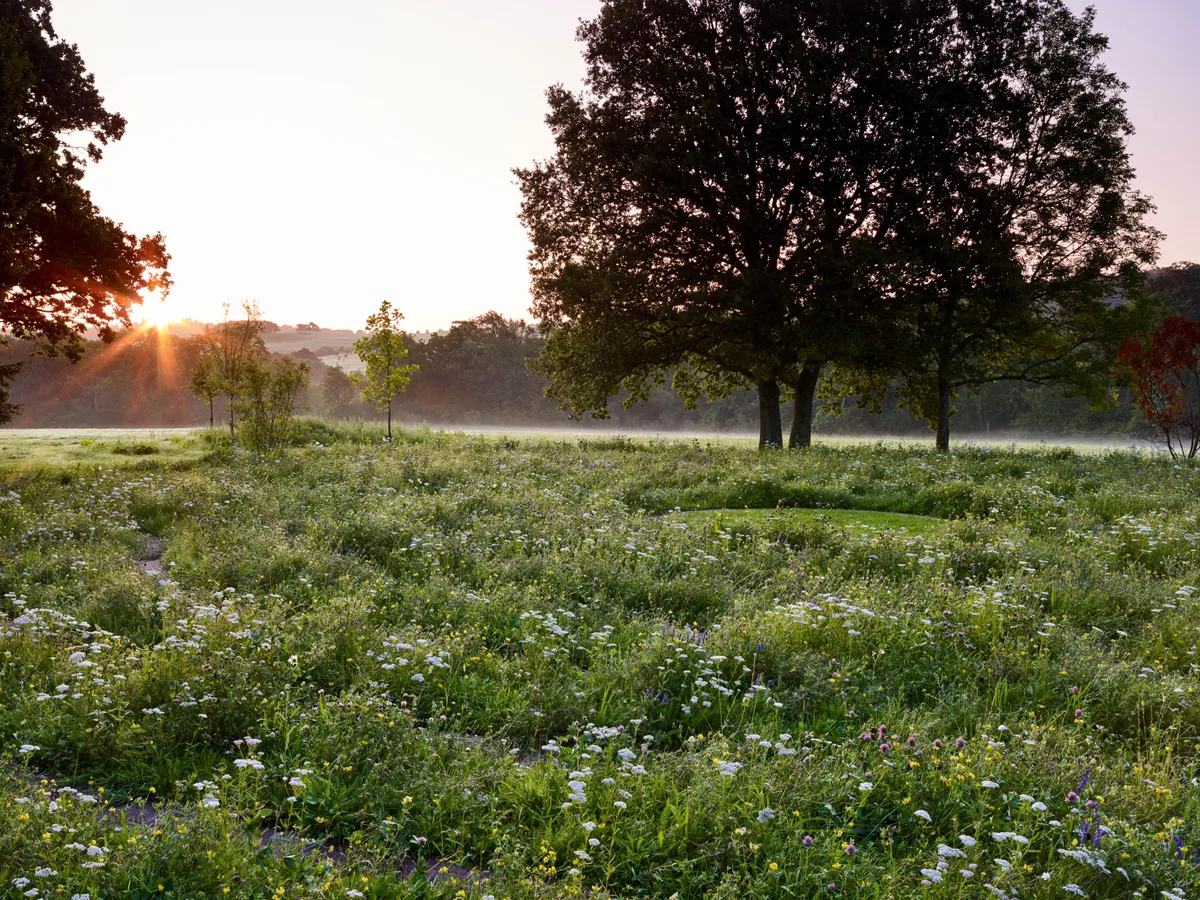
Spend some time getting to know the space well before you start to lay it out. By working with your site and its natural resources, you can save money, time and heartache, and quickly create a more self-supporting mini microclimate.
Think about who else uses your garden: are there certain creatures you want to create a home for or to encourage, or are there marauders you want to dissuade? Does your boundary link with others to provide a wildlife corridor for bats, owls, and harvest mice, or if not, could it? Add to your assessment the ways in which you want to spend your time in the garden, in terms of fun and productivity. And finally, make a list of the waste bins, bicycles, compost bins, glasshouse, air source heat pump, water butts, log store, extra children’s play areas, and other features that will all need a home outside too.
Once you are armed with the site specifics and know what you want to do in it, you can start to lay out what will go where, and decide how you will move through the spaces and what you will grow: vegetables, flowers, trees, hedges, herbs, climbers, nettles and comfrey. You may want to include partitions or be happy with areas and needs that overlap; nature is very good at sharing space, just don’t forget to build in areas for wildlife.
Plant in layers
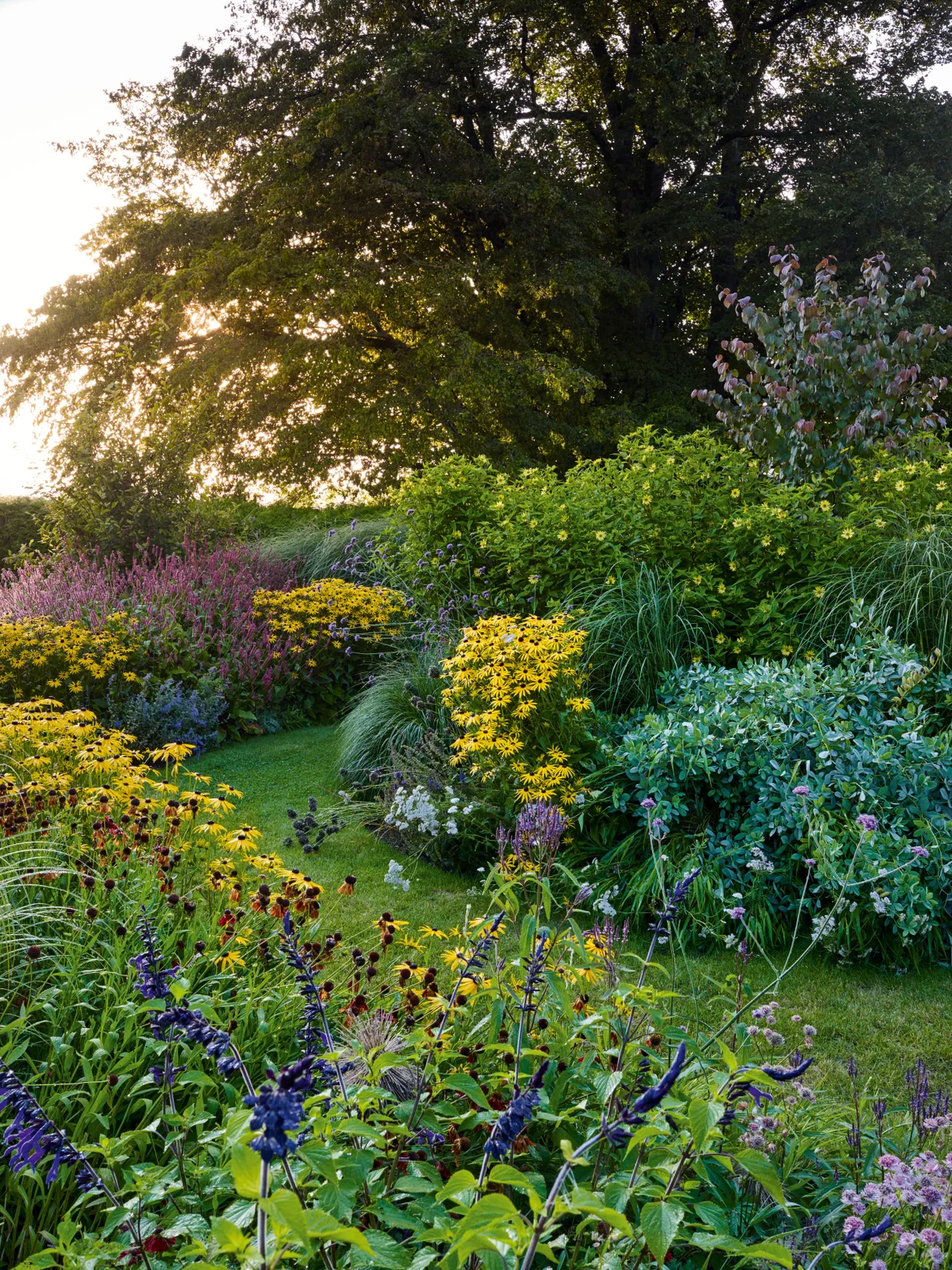
By planting in layers, you can protect the soil, lock up carbon and prevent water runoff, as well as creating a beautiful mini ecosystem.
If possible, you should start your planting with elements of structure: trees, if you can fit them, then hedges, shrubs and climbers.
After that, consider herbaceous perennials and, finally, quick-growing annuals, which will flower and set seed within the year.
Trees
As well as providing habitat, shade and carbon capture, trees are a great addition to a sustainable garden because they provide lots of different types of food for us and for wildlife. If you have space, plant one tree for every six square metres.
Shrubs and climbers
After trees, shrubs and climbers form the backbone of the sustainable garden. When chosen carefully they will provide structure, texture, colour and scent all year round, as well as places to live, nest and forage for lots of different wildlife, both above and below the soil. When we invite a person to a party, we don’t just think about what they look like, and the same is true of plants. By considering their properties and functions, as well as their appearance, we can create a mini ecosystem that can thrive and be almost self-sustaining, needing minimal additions from us throughout the gardening year.
So how do we choose shrubs and climbers? When planning what to plant, we want to make the least change for the greatest effect, so begin by seeing what is growing in your garden already and how you can work with that. If you have a fence covered in ivy or a wall with moss, think twice before stripping it all off, since moss is one of the best air purifiers, and mature ivy flowers are a favourite forage for bees, while the plant offers a great place for birds to nest. So, keep a bit of the beneficial stuff, but clip it back (though not during nesting season) if you are tidy minded, and then you can add to what’s already there.
Perennials and annuals
Add in one or two mixes of perennials, ideally with three perennials and one ornamental grass in each mix, to flower in succession throughout the season.
Read Marian's advice on creating a layered border
Choose plants that will thrive in your garden
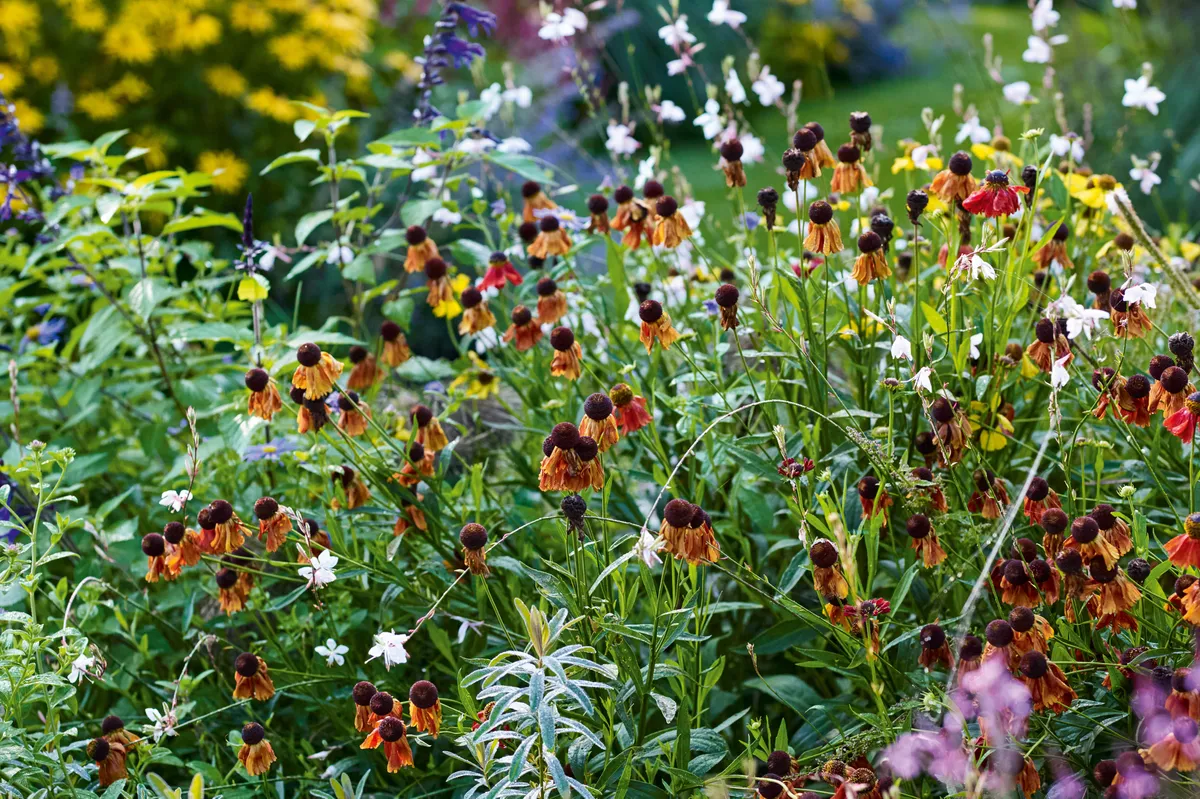
If you can select plants that would choose to grow in your garden naturally, you will be going with the energetic flow, rather than battling against nature. You'll also minimise the care needed.
Choose the bulk of your shrubs and climbers from communities of plants that grow nearby and do well, either in neighbours’ gardens or even in neglected corners in a town. It just needs a little research. Some shrubs such as buddleja are pioneer plants that colonise cracks in walls and fill them with flowers for butterflies. These tough plants will do well in any garden and may just need to be kept in check in warm humid environments where they can do too well and get out of hand. Once you have the shrub layer of the garden, add hardy climbers such as roses, clematis or honeysuckle for additional height and a longer flowering/nectar period. You can tie them to wires or trellis fixed to a fence or just let them scramble among other plants as they would in the wild.
Reuse existing materials
Make a stepping stone pathway
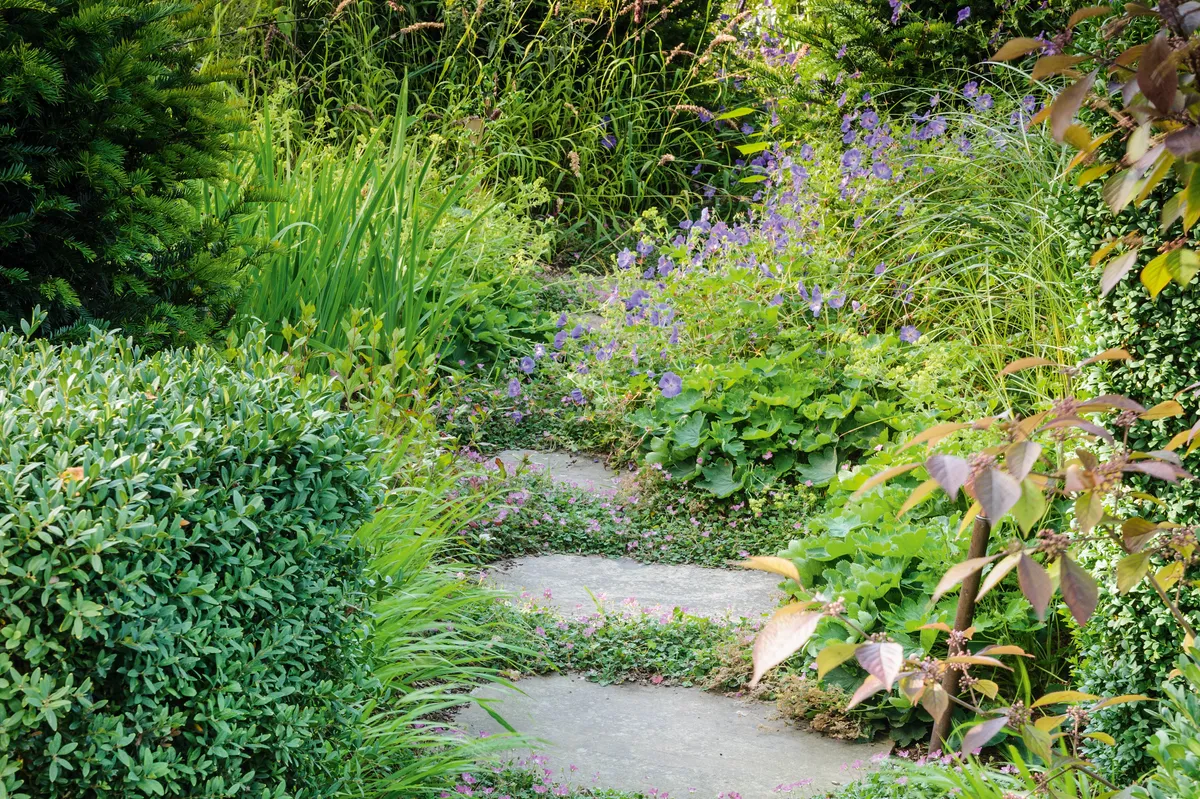
Reusing old paving stones, for example, such as for a stepping stone pathway through an area of planting, is a good way to keep resources on site.
Add a dead hedge
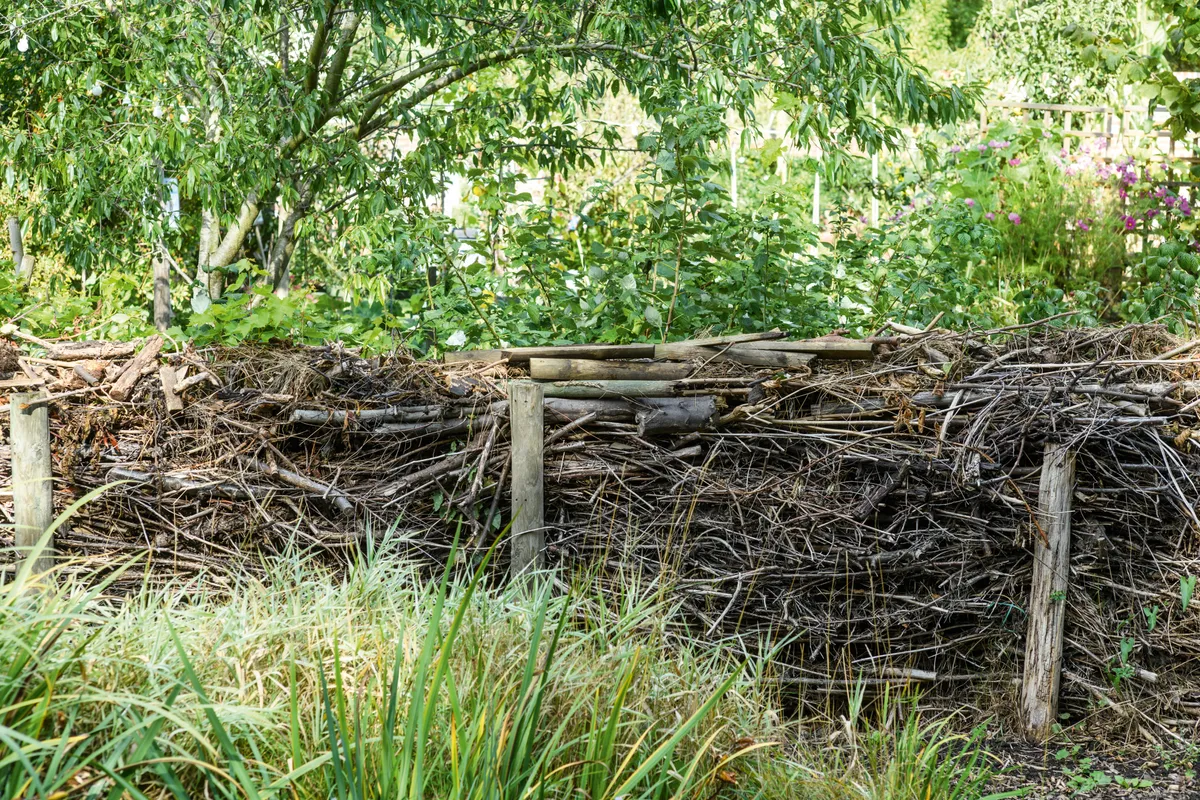
Dead hedges make great barriers and free alternatives to a fence, using cuttings from tree pruning and any woody material that can be laid in rows. They also provide excellent wildlife corridors between territories for small mammals – you will also find birds of prey perching on them to hunt. As dead hedges decompose, the wood becomes the perfect host for invertebrates and fungi.
This is an edited extract from the new book Sustainable Garden: Projects, insights and Advice for the Eco-conscious Gardener by Marian Boswall, with photographs by Jason Ingram (published by Frances Lincoln, £18).